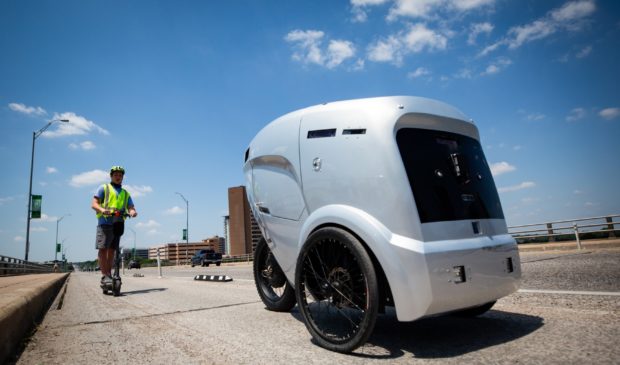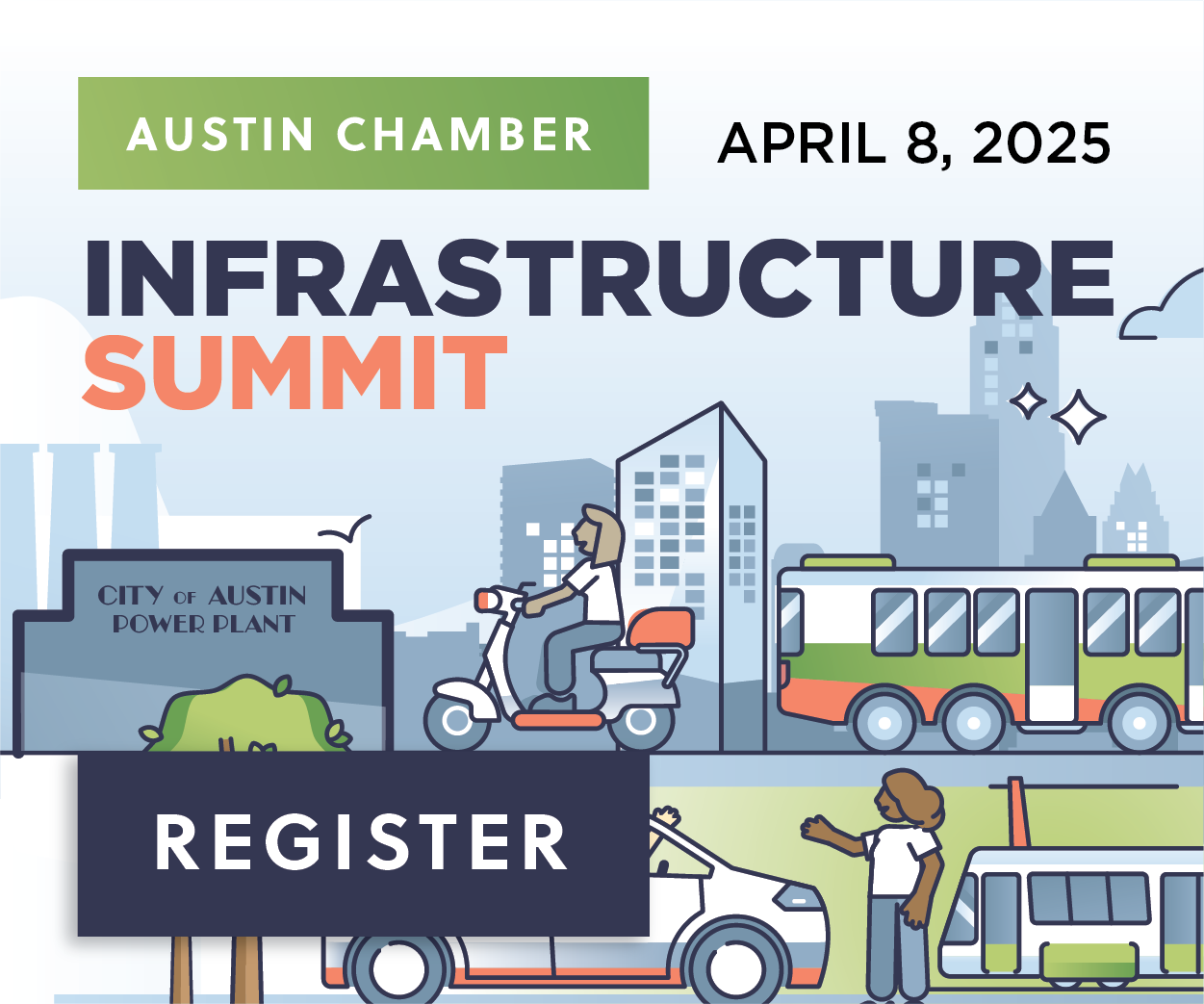Newsletter Signup
The Austin Monitor thanks its sponsors. Become one.
Most Popular Stories
- Council members celebrate unanimous defeat of bill that proposed putting Austin under state control
- The Austin area won’t be seeing a lot of bluebonnets this year. Here’s why.
- SXSW shrinks as indie venues contemplate competitiveness
- Eviction crisis spreads as affordability pressures worsen
- City pauses $10M in airport art over concerns local creatives were excluded
-
Discover News By District
Popular Whispers

Photo by Gabriel C. Pérez/KUT
Cyclists split on sharing bike lanes with pizza delivery robots
Thursday, June 24, 2021 by Nathan Bernier, KUT
A small fleet of robots delivering pizza in Central Austin has set off a debate about whether the semi-autonomous machines’ use of bike lanes will squeeze cyclists off the road or launch a technological revolution to reduce motor vehicle deliveries and boost demand for bicycle infrastructure.
“My personal view is that I don’t believe these belong in the bike lane,” said Jake Boone, who serves as vice chair of the city’s Bicycle Advisory Council.
“I almost feel like we’re the test subject for this new technology, and that does bother me,” he said. “What if in two years we have several hundred of these on the road?”
Michigan-based Refraction AI started operations in Austin last week with 10 semi-autonomous robots delivering Southside Flying Pizza in Travis Heights and the Central Business District. The company’s REV-1 vehicle looks sort of like a futuristic ice cream cart with two wheels in the front and one in the back.
For now, an attendant on an electric scooter follows the REV-1 while the machine’s artificial intelligence learns Austin streets. Eventually, the robot will roll alone at up to 15 miles per hour with a remote operator monitoring over the internet.
“We’re huge bike advocates and big believers that they are an important part of city transportation,” Refraction AI CEO Luke Schneider said. “The robots are required to yield the right of way to bicycles, to pedestrians, as well as to regular vehicular traffic.”
Some cyclists remain unclear about exactly how a REV-1 would move out of a cyclist’s way on a path next to cars and trucks whizzing past at 30 miles per hour or more, as is the case on parts of South Congress.
Austin Transportation Department staff provided a briefing on Refraction AI’s delivery robots Tuesday night to the Bicycle Advisory Council. The city did not consult the BAC before Refraction AI starting operations in Austin.
A statement from the Transportation Department says it had provided a list of groups Refraction AI should reach out to ahead of launching service here. The list of groups included the Bicycle Advisory Council. The company provided no briefing to the BAC ahead of the launch, although it was planning to speak to some members Wednesday.
“Looking at that before things are implemented on the street is critical so that we can let people know what to expect,” said Briana Cohen, chair of the Bicycle Advisory Council. She, like Boone, was speaking in her own capacity and not on behalf of the group. “It is really surprising if you go on the road and see something foreign, and it’s coming at you at 15 miles per hour.”
Cohen had concerns about robots operating in bike lanes, but said she was also hopeful that such small electric vehicles could eventually reduce the number of vehicles on the road.
“In terms of exploring other options besides using cars, I think it’s headed in the right direction,” she said.
The prospect of robots replacing multiton vehicles propelled by toxin-belching internal combustion engines excites a lot of bicycle advocates.
“We have a real problem with deliveries in urban areas,” said Chris Riley, a former Austin City Council member who is now president of Bike Austin, a nonprofit focused on making cycling more accessible. “I am glad to see a shift in the direction of other forms of delivery, specifically delivery that relies on vehicles that are more human-scale.”
Riley said he believes embracing the use of bicycle infrastructure for more purposes could add to the argument for accelerating construction of hundreds of miles of bike lanes proposed in the city’s 2014 Bicycle Plan.
“If we’re relying on protected bike lanes for deliveries like this, we’re soon going to find that our existing infrastructure just doesn’t go that far, because we don’t have much of it,” Riley said.
Rules adopted by the City Council in 2017 would have restricted delivery robots to sidewalks, crosswalks and other “pedestrian ways.” But a bill passed by the state Legislature in 2019 changed that to allow for robots to operate on the side of the road, including in bicycle lanes.
This story was produced as part of the Austin Monitor’s reporting partnership with KUT.
The Austin Monitor’s work is made possible by donations from the community. Though our reporting covers donors from time to time, we are careful to keep business and editorial efforts separate while maintaining transparency. A complete list of donors is available here, and our code of ethics is explained here.
You're a community leader
And we’re honored you look to us for serious, in-depth news. You know a strong community needs local and dedicated watchdog reporting. We’re here for you and that won’t change. Now will you take the powerful next step and support our nonprofit news organization?






